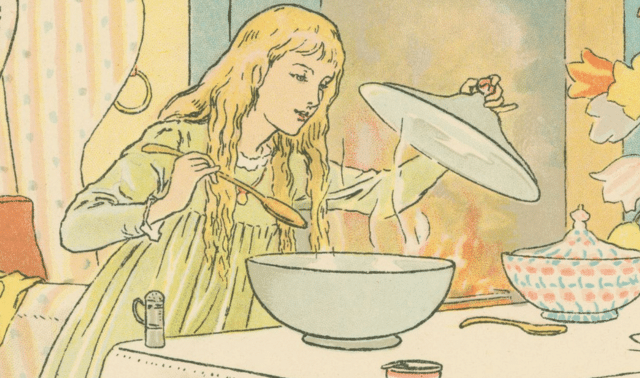
Snoozing yet? Unfortunately, a lot of family histories start this way with similarly tranquilizing effects. Now try this: “One scorching summer day in 1887, Norman Nimbleknocker looked up from his plow to see a billowing black cloud extend a skinny finger toward the Iowa prairie. He turned toward the cabin …” You’re dying to know, aren’t you — what happened to Norman?
Writing your family’s story is the ultimate way to weave together all your genealogy findings and put flesh on the bones of your ancestors, telling the saga of their lives in historical context. Similarly, putting your own life story on paper creates a lasting legacy for your descendants. But your words won’t mean much if no one wants to read them. Sure, your immediate family will probably politely flip through your tome, no matter how tedious it is. But wouldn’t you rather they can’t put it down, avidly turning the pages into the wee hours as though you’d penned the Da Vinci Code? Written with verve, your story might even find an audience beyond your kin; for example, researchers who have similar ancestry or are interested in the era.
For a half-dozen years now, I’ve taught at the annual Maui Writers Retreat <www.mauiwriters.com>, where my students have included aspiring writers of family histories, memoirs and biographies. Whether they hope to merely record their families’ pasts or write the next Angela’s Ashes, they struggle with the same missteps and roadblocks. But with a few nudges in the right direction, these pen-wielders render their stories not only more riveting to read, but also easier and more enjoyable to compose. You can do the same, and you don’t have to pen a tell-all exposé or turn your family history into a potboiler, either — just enhance what you’ve learned through your research by borrowing these tried-and-true techniques from prose pros.
1. Cast chronology aside.
Chronology can be the biggest stumbling block in writing a readable memoir or family history: Where should your story start? The obvious — but frequently wrong — answer is to start at the beginning, with your birth or the birth of the ancestral “character” whose tale you’ve chosen to tell. But unless Great-grandpa was born, say, on a dogsled as his parents battled to cross the prairie in a blinding snowstorm, his birth was probably not the most interesting or reader-grabbing event of his life. More recent births — like your own — are likely even less eventful. Imagine picking up a book and flipping to page one:
I was born at Sioux Valley Hospital in Sioux Falls, SD. It was a normal delivery, and I went home from the hospital with my mother a few days later as she began all the usual challenges of taking care of a new baby.
If the latest John Grisham thriller opened on such an ordinary, “who cares?” note, would you keep reading? Doubtful. Of course, you’ll want to incorporate the vital facts about your subject’s birth — after all, you’re a genealogist — but you don’t have to start with events that are so undramatic. Your readers were born, too, so why not grab their attention with something they haven’t experienced?
Don’t take that advice too far, though. In theory, the whole of history could be your scope. Following in James Michener’s literary footsteps, you could open with your ancestors’ native continent thrusting out of the sea, or with life first emerging from the primordial ooze. (The first sentence of Michener’s Hawaii begins, “Millions upon millions of years ago, when the continents were already formed and the principal features of the earth had been decided …”) But you’re no James Michener, and your readers want to learn about your life or your ancestor’s, not unrelated history. I’ve seen memoir writers begin their own life stories by recounting the lives of their ancestors. Covering forebears is fine for a family history, but if your focus is one person’s life story, zoom in on his or her life immediately.
2. Open with a bang.
Keep slogging through your research until you find a point that captivates readers and encapsulates what your saga is all about. I once had a student, Dee Dee Phelps, who was half of the rock ‘n’ roll recording duo Dick and Dee Dee during the early heyday of “American Bandstand” — potentially fascinating fodder for the memoir she wanted to write. But by the time she arrived in my class, she’d already penned 300 pages (beginning with her grandparents’ courtship) and had yet to get to her own birth, much less her music career. Painful though it was, she set aside those 300 pages to start instead with a reader-grabbing scene about hearing herself on the radio for the first time during a family road trip:
The shimmering asphalt stretched like melting licorice before us as Dad steered our green ’58 Pontiac north of Fresno on Highway 5, toward the faraway cool of our vacation near Seattle. I slouched in the front seat beside him, leaning against the window, miserable but careful not to ruin my bubble hairdo. Mom sat in back so she could separate my two younger sisters when they fought.
Before the end of the first manuscript page, after flipping on the radio, she lets out “such a yell my Dad almost drove into a ditch.” We learn why — her own voice is coming from the speakers:
At that moment, I realized something huge had taken place. Our lives would never be the same.
“Well, what do you know,” Dad said. “Our little girl is on the radio.”
You want to read on, don’t you? How did this bubble-haired teen get a top-40 single — and why didn’t she know before hearing it on the car radio? Will her parents support her music career? For the answers, see Phelps’ recently published book, Vinyl Highway (Trafford Publishing, <www.dickanddeedee.com>). That’s the job of your first few pages — to make readers curious, to inspire them to turn the pages in search of answers. Note that’s curious, not puzzled. Give enough detail so your readers ask “what happens next?” not “what’s going on?”
How do you find the best starting point for your own memoir or family history? Look for a dramatic point in your chronology — I often advise starting with your second-most exciting scene, since you don’t want to use up your big scene in chapter one. But don’t just aim to open with drama: Select a scene that also emphasizes the focus or theme of your overall story. If you’re writing about your ancestors’ struggles to survive in 19th-century Sweden, starting with the winter when their only cow starved to death would arouse readers’ curiosity (“how will they survive?”) and immediately dramatize your central theme. If that’s not also the chronological start of your story, don’t worry — you can always “flash back” to the beginning (“Sven Magnusson was born …”) once you’ve mesmerized your readers.
3 Cut to the chase.
For some reason, memoir and family history writers always hesitate to really get the story going. They insist on what I call “throat clearing”: page after page of tedious background on “why I decided to write this book” or “how I wrote this book.” Nobody cares! Take a look at the back covers of a few best-selling memoirs: You won’t find any touting “the amazing story of how Frank McCourt decided to write Angela’s Ashes, how he got his typewriter repaired just in time …” No, readers want to get to the meat of your story. If you simply must have some sort of lengthy prologue or introduction, at least label it clearly — so readers can skip it, which they will — or bury it in the back, for those who want to know about your research.
A similar trick aspiring writers use to avoid actually starting their stories is the “framing device.” You’ll recall this little maneuver from the 1994 movie Forrest Gump, which both opens and closes with Forrest on a park bench, opining about how “life is like a box of chocolates.” But unless your story is as fascinating as Forrest Gump’s and you can tell it equally well, don’t risk losing your audience by framing it. Why open with Great-grandma, age 90, sipping lemonade in her rocking chair and slowly starting to reminisce, when you could cut to the chase and nail your readers’ attention immediately with a scene describing her harrowing trans-Atlantic journey?
4 Build your story from scenes.
You may have noticed I keep referring to “scenes.” These are the building blocks of your memoir or family history. Think of your story as a movie: What would the opening scene be? Visualize it. What would come next? Of course, in writing a history, you’ll have lots of factual material that’s not easily dramatized. Your scenes can work like fence posts, leading readers along from one dramatic incident to the next, with this necessary exposition strung in between like the rails.
Like scenes in a movie, those in your family story must have people — your “characters” — and be set in a place and time. These elements are as important to scene writing as they are to genealogy. Here’s how another former student, Myrtle Siebert, set the opening scene of her family saga, From Fjord to Floathouse, subtitled “One family’s journey from the farmlands of Norway to the coast of British Columbia” (Trafford Publishing, <www.trafford.com/robots/01-0464.html>)
On an April Sunday of the year 1893, an elderly Lutheran priest prepared himself for the morning service. As he dressed, Camillo Rantzan Boeckmann reviewed in his mind this mornings message to his parishioners. A raw wind blew a skiff of snow off the western hills and rattled the vestry window.
After you’ve set the scene, something has to happen in those pages to make your characters or their world different by the end of the scene. A scene takes your story from here to there — and it sets up the next scene. If you can’t say what a certain scene accomplishes in advancing the action, cut it out.
5. Scribble out a plan.
Once you’ve figured out your key scenes and outlined them in order, you’ll have a bare-bones plan for everything you need to write. You want your readers to wonder what will happen, but you’re asking for writer’s block if you don’t know what to write next. Your initial outline doesn’t have to be fancy: Entries might be as simple as “Great-grandma boards the ship for America.”
Next, you can use this simple outline to organize your notes and the research you want to work into the story. As important as your outline is to figuring out what information goes where, it also will help you make the crucial decisions on what material to leave out — research tidbits that simply don’t have a place in your tale.
6. Show, don’t tell.
This classic rule of effective writing can be tough to follow when your topic is the past — either you don’t remember or you weren’t there. How can you “show” scenes that you never saw or recall only dimly? Just as in genealogy, in-depth research is the key. Explore not only the facts about your ancestors’ lives, but also everything you can about the world around them. Then you can set your characters into that world.
Author Erik Larson, for example, wasn’t alive for the 1893 World’s Fair, but that didn’t stop him from bringing the Chicago of that era vividly to life in his best-selling The Devil in the White City (Vintage):
Smoke filled the caverns between buildings and reduced lateral visibility to a few blocks. Now and then police officers cleared a path for one of the city’s bright yellow streetcars, called grip-cars for the way their operators attached them to an ever-running cable under the street. Drays full of wholesale goods rumbled over the pavers, led by immense horses gusting steam into the murk above.
If you have your ancestor’s diary, that’s a great place to start. Also look for county and social history books that detail life in your subject’s time and place. You might even put yourself in your ancestor’s shoes to describe scenes such as the one about Camillo Rantzan Boeckmann from Siebert’s book. There’s nothing wrong with that — in fact, it can help you add interest — as long as you let readers know you’re fictionalizing.
Once you’ve done your homework, follow Larson’s example and use it to show readers the world of your ancestors’ past. Whenever possible, avoid passive recounting — mere telling: “Chicago had streetcars, also known as grip-cars. Merchants also used horses to carry goods through the city.” Opt instead for strong, active verbs — rumble, gust — and set your facts into motion.
7. Be detailed.
Architect Mies van der Rohe’s famous adage “God is in the details” applies to books as well as buildings. You can make your story a page turner by being specific rather than general. Again, this starts with your research: When you find Great-grandpa’s probate records, don’t note only the bare names and dates. Copy down, too, the details of his household inventory, livestock and farm equipment — not just what, but also how many and what kind. That city directory listing for your ancestor can not only confirm that he did indeed live in Milwaukee in 1935, but also supply the names of his neighbors, a sense of his neighborhood, and specifics on stores where he probably shopped.
Look how Myrtle Siebert weaves specific details into the account of her Norwegian family in British Columbia:
Five fat pigs wallowed in the sandy dust of their pen out behind the house. … Three-dozen young pullets had begun to lay regularly — they scratched dissolutely in their yard behind the woodshed or settled in straw-filled nests stacked along the back wall of the hen house. … Bees buzzed energetically under the holly-hocks that framed the windows and among the struggling roses.
How many pigs? Five. Not merely “a bunch of chickens,” but “three-dozen young pullets.” The bees buzzed among the “hollyhocks” and “roses” — not the generic “flowers.”
These details paint a fascinating picture. They make your family history or memoir much more than a mere collection of dusty facts. Instead, they help turn history into a story — one that generations of readers will pore over as avidly as any best seller, until at last you bring them to “The End.”
If Truth Be Told
While striving to make your memoir or family history as gripping as a novel, you don’t want to wind up a pariah like James Frey, the Oprah-hyped author of A Million Little Pieces (Anchor), who was revealed earlier this year to have exaggerated and made up much of his so-called memoir. How much should you invent or dramatize the facts in what is, after all, supposed to be a true story? You weren’t around in 1850, and if you’re planning a memoir, you can’t recall everything that’s happened in your life. Can you still turn those events into scenes?
The cardinal rule — which Frey broke — is to be honest. If you’re writing straightforward history, don’t include anything you haven’t gleaned from your research — it’s just the facts, ma’am. If you’ve dramatized things a bit and invented or re-created dialogue you weren’t really around to hear, that’s OK as long as you acknowledge it with a brief disclaimer. In the novel Gold Mountain (Vintage Press), for example, the main character W.P. Inman was a real person who twice deserted from the Confederate Army. Author Charles Frazier included a note in the Acknowledgements that he’d fictionalized much of the story.
Most genealogy software programs can automatically turn your research results into a sort of book, taking your already-entered notes and data and compiling it into a single file. While not really “written” like a true family history book, the result can be a handy way to share your findings with other researchers and family members. It can also serve as the foundation for a more fully fleshed-out family story, putting all your research at your fingertips.

You’re not ready to take on writing the entirety of your clan’s history, but you still want to preserve family lore or put your research discoveries into historical context. Here are five quick ways to share your story:
• Family history journal: Keep a diary of your genealogical discoveries and how you felt or what you thought about them.
• Photo narratives: Pick favorite photographs and write down everything you know about them — names of the people pictured, the event shown, the location.
• Family atlas: Put maps and photos of your ancestral towns into a book or album, and add details about the locales, ancestors who lived there and historic events that took place in the area.
• Legacy book: Fill in a pre-printed book with information about your life and your family tree, or use the prompts as a springboard for your writing.
• Web site: Use your genealogy software or a free hosting service, such as Tripod <tripod.lycos.com> or Geocities <geocities.yahoo.com>, to plant your family tree online. Include photos, scanned records, descriptions and GEDCOMs.





